French Foreign Legion in World War I and II
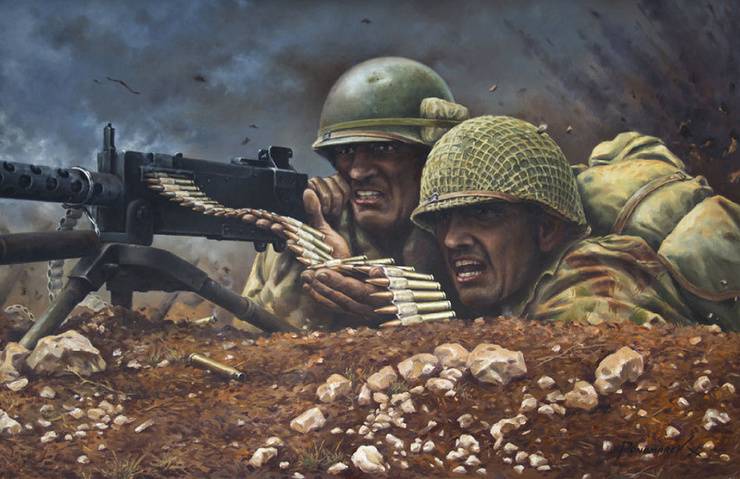
Article "Dogs of War" of the French Foreign Legion " we talked about stories the emergence of this military unit, its military path. We ended the story by pointing to the beginning of World War I. Now it's time to find out the continuation of this story.
Foreign Legion during the First World War
At the beginning of World War I, military personnel of the Foreign Legion were divided into two parts. Soldiers of German descent (and there were many) remained in Algeria. Among them could be a German writer and philosopher Ernst Junger, who ran away from home at the beginning of the XNUMXth century to enlist in the Legion, but returned home in exchange for a promise to travel to Kilimanjaro and ended up fighting in the German army.
All other legionnaires (soldiers of other nationalities) were transferred to Europe.
At the same time, well-known emigrants living in France called on their compatriots to join the French army ("Call of Canudo", on behalf of the first Italian writer to take such an initiative; Riccoto Canudo himself also went to the front, was wounded and awarded the Legion of Honor) .
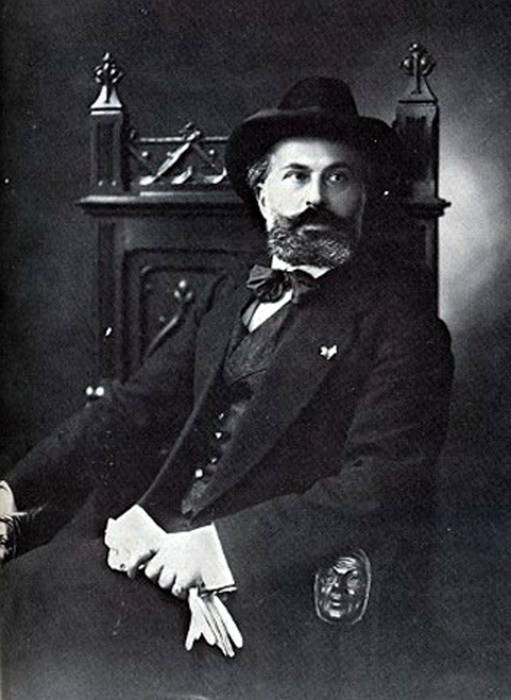
The appeal of Canudo was heard: 42883 volunteers of 52 nationalities responded to the call, more than six thousand of whom died in battle. As you probably already guessed, they all ended up in the Foreign Legion. Only citizens of this country could apply for service in other formations of the French army.
Among the new volunteers of the legion was the American poet Alan Seeger, whose poem “Rendezvous with Death” was often quoted by John Kennedy:
Here on a wounded hill ...
Spring day has passed
In a burning night town -
And faithful to duty, I go
Last time for a rendezvous.
He died in one of the battles in France on July 4, 1916.
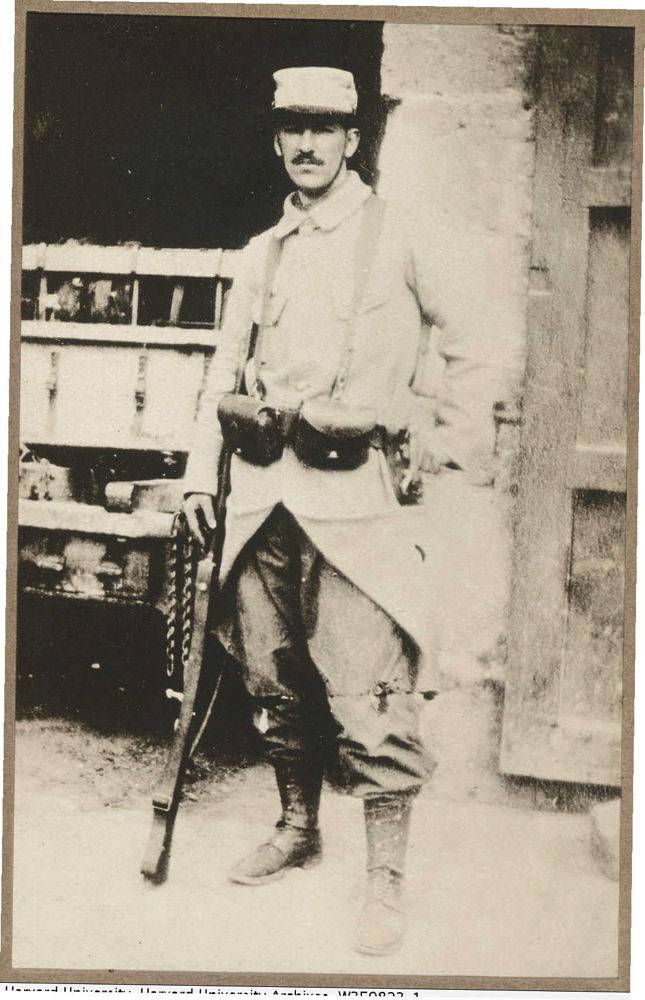
As part of the First Regiment of the Foreign Legion, the poet Blaise Sandrar (Frederic-Louis Sauze), who lost his right hand, went to the front, and Francois Faber - Luxembourg cyclist, winner of the Tour de France race in 1909 (rose to the rank of corporal, died 9 May 1915).
Guillaume Apollinaire also appeared at World War I, who was arrested in September 1911 on suspicion of complicity in the theft of the Mona Lisa from the Louvre. He received French citizenship on March 10, 1916, and on March 17 was wounded by a shell fragment in the head, after which he was demobilized.
He served in the army and Henri Barbusse, but as a French citizen, in the usual regiment.
Of the other celebrities who fought in the Foreign Legion during World War I, mention should be made of Louis Honore Charles Grimaldi, who began his service in Algeria in 1898, quit in 1908, but returned to duty and rose to the rank of brigadier general. In 1922, he became Prince of Monaco, ascending the throne under the name of Louis II.
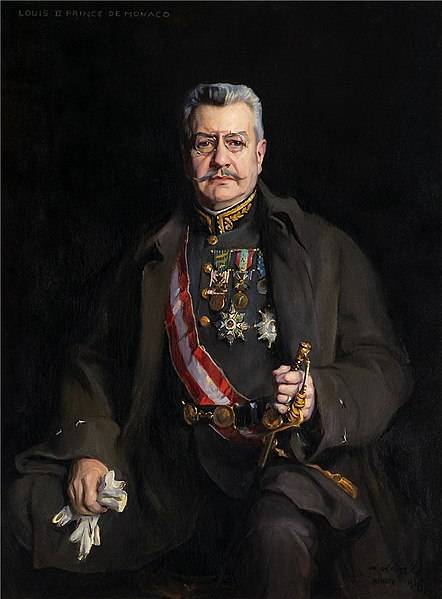
About the Moroccan division (its motto: “Without fear and pity!”), Which included units of the Foreign Legion (as well as zouaves, tyiraliers and squadrons of odors), Henri Barbus wrote in the novel “Fire”:
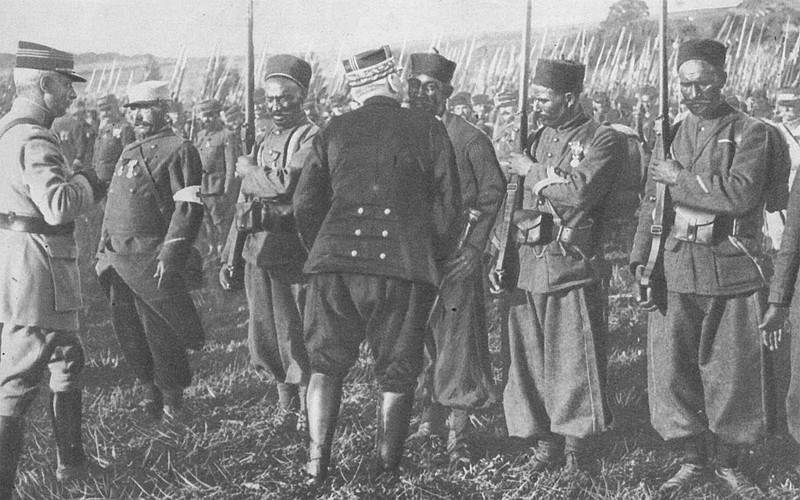
The Moroccan division entered the fray on August 28, 1914. The first battle on the Marne was the first big battle of the legionnaires in that war, part of its units were brought to the front line by Paris taxi. At the positions of Mandemann (Mondement-Montgivroux), the loss of the legion amounted to half the personnel.
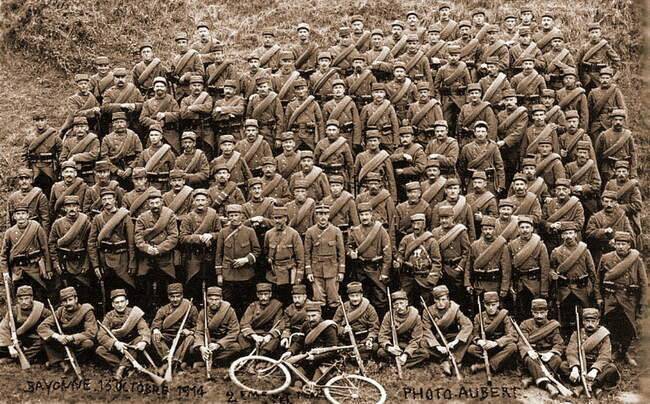
In May 1915, the legionnaires took part in the Second Battle of Artois, in September - they fought in Champagne. At the same time, legionnaire formations fought in Gallipoli during the Allied Dardanelles operation.
In July 1916, the legionnaires suffered heavy losses in the Battle of the Somme, where, incidentally, was widely used aviation (500 Allied planes versus 300 German) and first appeared on the battlefield Tanks.
In April 1917, the legionnaires of the Moroccan brigade took part in the so-called Nivelles offensive (Nivelles' meat grinder), in which the French tanks unsuccessfully made their debut: of the 128 vehicles that went on the attack on April 16, only 10 returned.
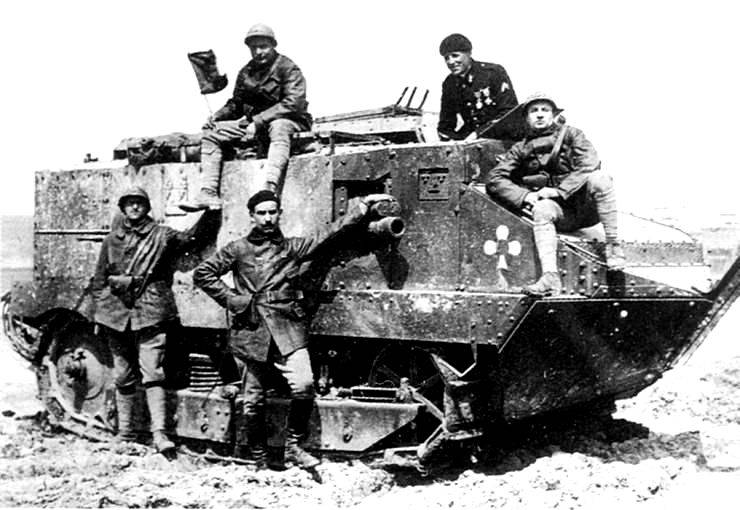
On August 20, 1917, during the battle of Verdun, the Moroccan division was again thrown into the battle as the last reserve: after two days of fighting, it managed to throw off the advancing German units. Losses of “Moroccans” accounted for up to 60% of the personnel.
In June 1925, this memorial sign was erected in the town of Givenchy-en-Goel:
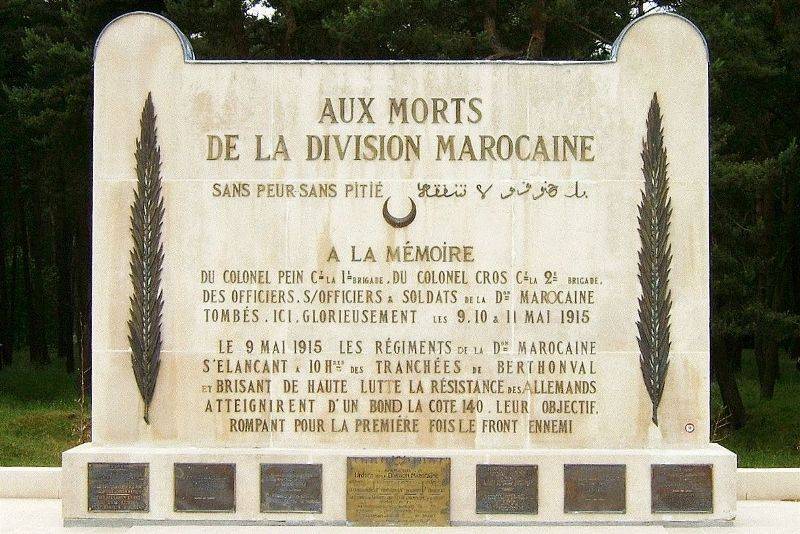
In 1917, Raul Salan, the future gentleman of 36 military orders and medals, one of the most famous generals of the French army, was in the service of the Foreign Legion. For attempting to organize a military coup, he will be sentenced in absentia by the de Gaulle government to death in 1961 and to life imprisonment in 1962, amnestied in 1968 and buried with military honors in June 1984. In the following articles of the cycle we will constantly recall him.
At the beginning of 1918, the so-called “Russian Legion of Honor” was included in the Moroccan division, which included the future Marshal of the Soviet Union R. Ya. Malinovsky (this was described in the article “The most successful Russian“ legionnaire ”. Rodion Malinovsky »).
In August of that year (1918), one of the companies of the French Foreign Legion was in Arkhangelsk as part of the occupying forces of the Entente. On its basis, a battalion was created (three infantry companies and one machine gun, 17 officers and 325 privates and sergeants), 75% of the troops of which were Russian. On October 14, 1919, this battalion was evacuated from Arkhangelsk. Some of the Russian legionnaires transferred to the White Guard detachments, others were transferred to the First Foreign Regiment, and then to the First Cavalry (armored cavalry) regiment.
Then the French battalion of the Foreign Legion was created in Arkhangelsk, numbering about 300 people.
Interbellum The fighting of the units of the Foreign Legion in the interwar period
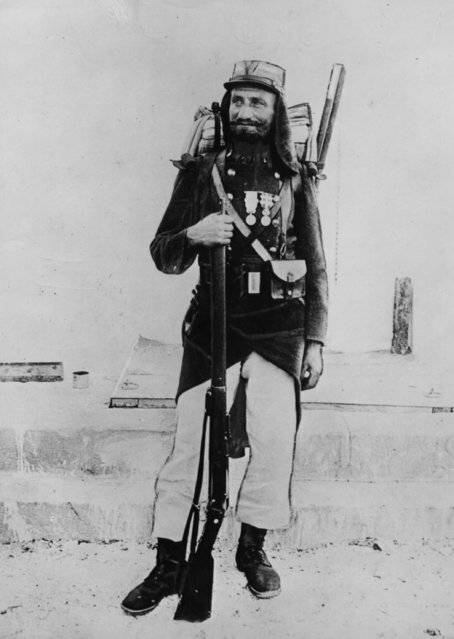
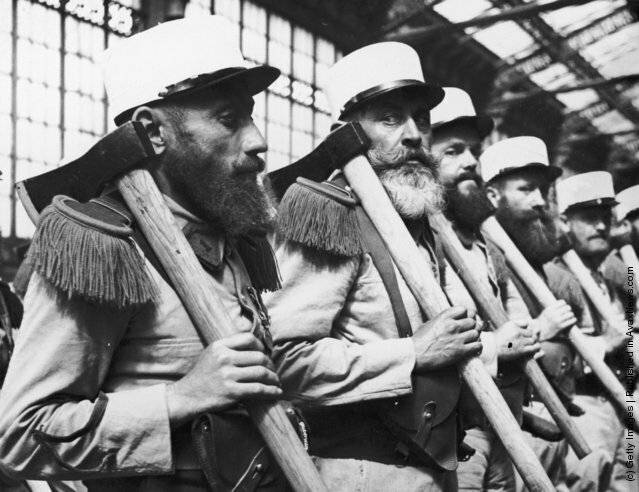
The period between two world wars can be called peaceful only in quotation marks. From 1920 to 1935, France waged war in Morocco, expanding its territory in this country.
Many people learned about this war only from the film "Legionnaire", shot in the USA in 1998. The protagonist of this picture, professional boxer Alain Lefebvre, without losing the “bought” fight, was forced to hide from the bosses of the Marseillean mafia in the Foreign Legion - and ended up in Morocco, on the Reef War (which was briefly described in the article “Zouaves. New and unusual military units of France ").
Another film about the Reef War - “Legionnaires” (“Go Forward or Die”) was shot in Britain in 1977 by the American director Dick Richards, known in Russia mainly as the producer of the film “Tootsie” (second place in the top 5 comedies with dressing men into women).
In this film, Richards, in my opinion, is still a little nostalgic about the “white man’s burden” and the lost opportunity “day and night, day and night” to go around Africa. In the story, Major William Foster (American), a veteran of the fighting in Morocco and World War I, was sent as the head of a legionnaire detachment to the vicinity of Erfoud, but not to fight, but practically with a humanitarian mission - to protect a group of French archaeologists from the "bloodthirsty Berbers". The purpose of the expedition is to find the 3-thousand-year-old tomb of the "Angel of the Desert" - a local saint, and "evacuate the golden sarcophagus and other valuables to the Louvre" (practically the "tomb raider" Lara Croft in a white cap). Foster is also an old acquaintance of the rebel leader Abd al-Krim (he was also described in the above article Zouaves. New and unusual military units of France ”) Earlier, he promised Abd-al-Krim not to touch the tomb, but this time when meeting with him he says: they’ll dig a little here, rob the grave and leave back, do not pay attention. But for some reason, Abd al-Krim al-Khattabi did not like this proposal.
Foster’s detachment, in addition to him, contains only three decent people: “Russian Ivan” (a former guard of the imperial family), a refined French musician and somehow a young man from an English aristocratic family who fell into the legion. The rest are almost entirely criminals and German prisoners of war. Serving in the legion is shown in the film without a romantic flair: exhausting training, skirmishes with the Berbers, suicide of an unstable musician, abduction of an aristocrat whose body was found with traces of torture, death in the battle between Ivan and Foster.
Images from the film "Legionnaires":
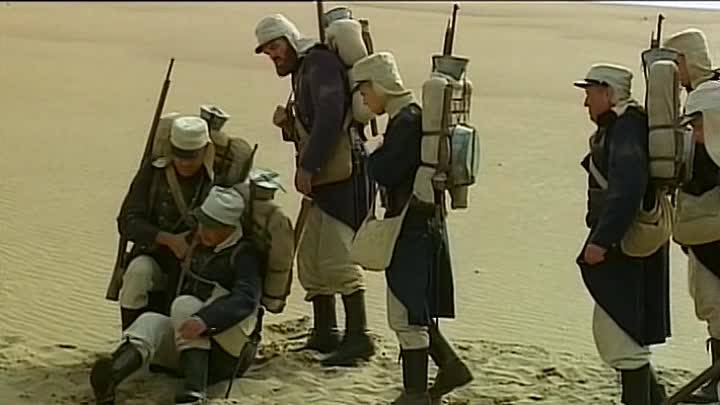
In one of the two versions of the film's finale, the last surviving hero (a former thief specializing in theft of jewels) tells the recruits of the legion:
But in the American film “Morocco” (1930), life in this French colony is shown to be much more “beautiful”, and a cute legionnaire (played by Gary Cooper) easily discourages pop singing (Marlene Dietrich) from some rich, but not romantic "civilian".
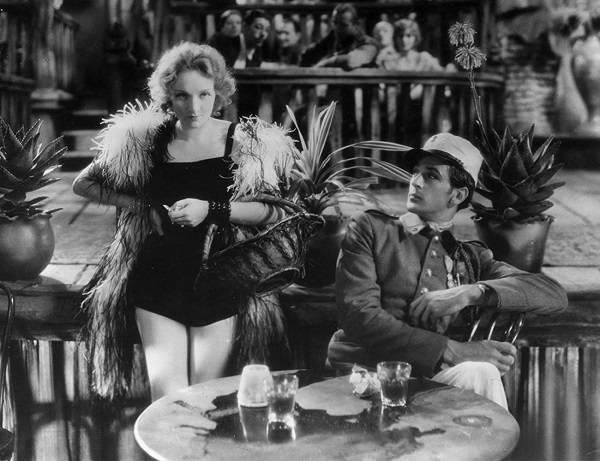
The Danish Prince Oge, Earl of Rosenborg, took part in the Reef War, who, with the permission of the King of Denmark, entered the Foreign Legion with the rank of captain in 1922. He was then wounded in the leg, received the "Military Cross of Foreign Theaters of War", and then the Order of the Legion of Honor. He rose to the rank of lieutenant colonel and died of pleurisy in the Moroccan city of Taza on September 19, 1940.
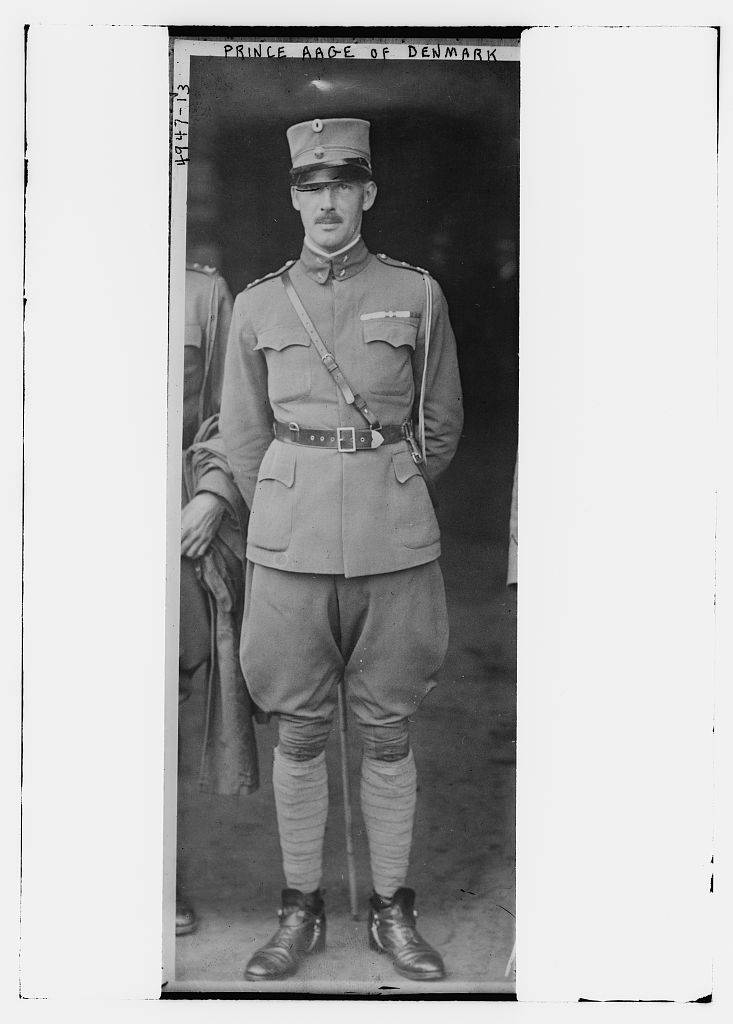
Fighting in Syria
From 1925 to 1927 The foreign legion also fought in Syria, where he had to participate in the suppression of rebellions of Druze tribes.
Syria and Lebanon, which were previously part of the Ottoman Empire, the French received on the basis of the First World War. According to officials of the French Republic, one can get an idea of their attitude towards the new colony. Prime Minister Georges Legy declared in 1920:
And General Henry Joseph Gouraud (served in the colonial forces since 1894 in Mali, Chad, Mauritania and Morocco, commanded the colonial corps and the French corps in the Dardanelles during World War I), inspecting the Al-Ayubi Mosque (“Honor of the Faith”) in Damascus said:
Thus, the French quite seriously considered themselves as heirs to the crusaders.
Druze lived in the south and southeast of Syria - in the province, which the French called Jebel Druz. Unable to make concessions from the colonial authorities, on July 16, 1925, they destroyed 200 French soldiers at Al-Qarya. Then, on August 3, they defeated the already quite serious three-thousandth corps, which included artillery units and several Reno FT tanks. In the fight against French tanks, the Druze applied a bold and innovative method: they jumped onto the armor and pulled out the crew - so they managed to capture 5 tanks.
Other Syrians, making sure that it was possible to fight the French successfully, also did not stand aside: even the suburb of Damascus - Guta rebelled. In Damascus, fights began in which the French used artillery and aircraft. As a result, they still had to leave the almost ruined city. In September, a large military detachment of General Gamelin (the future commander of the French army in the short-lived campaign of 1940) was surrounded, almost blocked, near Sueida, and an uprising began in October 4 in Hama.
The French achieved their first successes only in 1926, when they brought the size of their army group to 100 thousand people. The basis of these forces was the units of the Foreign Legion and the Tyrael (including Senegalese).
The First Armored Cavalry Regiment of the Legion and the Circassian “Light Squadrons of the Levant” played an important role in suppressing this uprising. “Russian volunteers of the French Foreign Legion”.
One of his poems was dedicated to the events in Syria by the Cossack poet Nikolai Turoverov, who became a legionnaire, it was quoted in the above article (“It doesn’t matter in which country to sweep away the popular ground”).
The aforementioned Raul Salan, who returned to the legion after studying at Saint-Cyr, also fought in Syria.
Foreign Legion on the Western Front during the Second World War
The generation of the French, who entered the war with Germany in 1940, was already too different from their fathers who defeated Germany in the Great War of the beginning of this century. Heroes died at Marne, near Verdun and Somme. The new French preferred to surrender and did not particularly suffer in the German "European Union" - neither in the part of France occupied by the Germans, nor even in the territory controlled by the government of the resort town of Vichy.
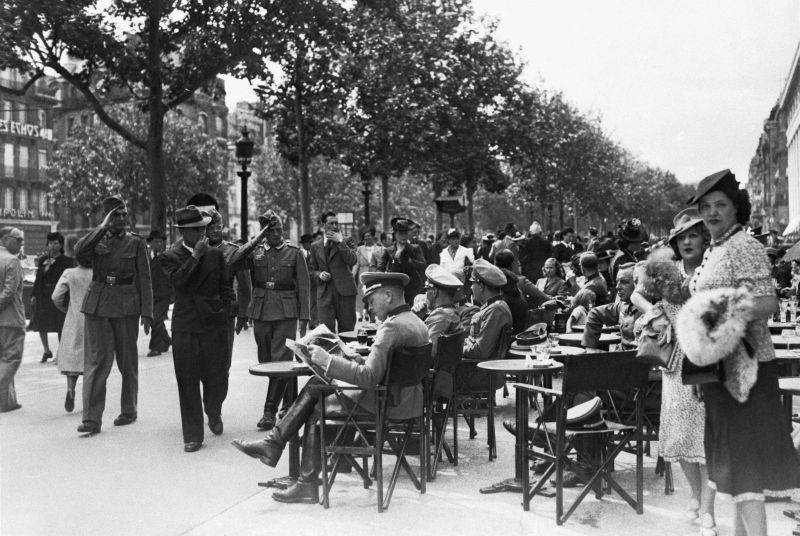
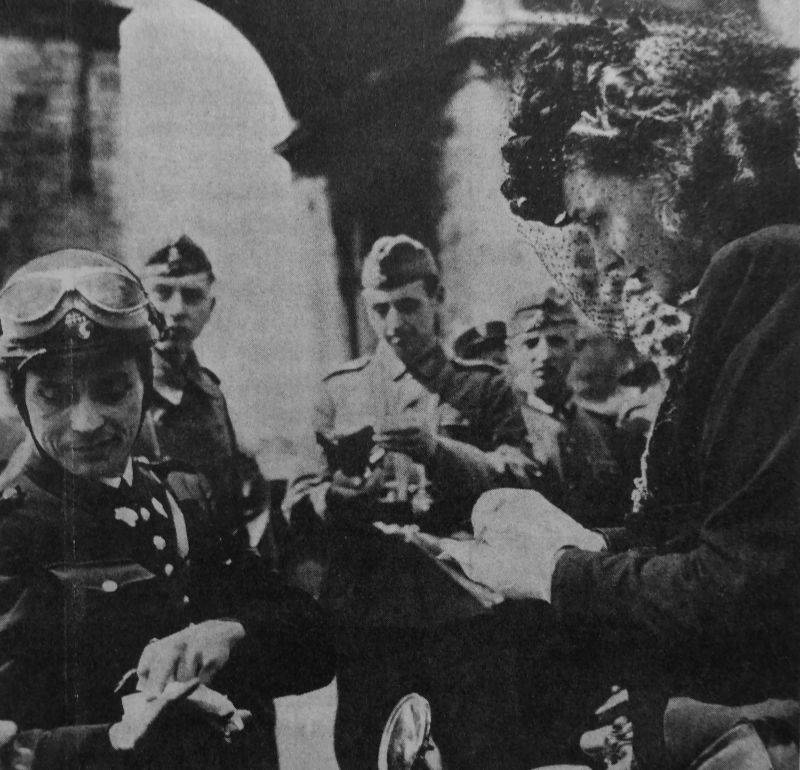
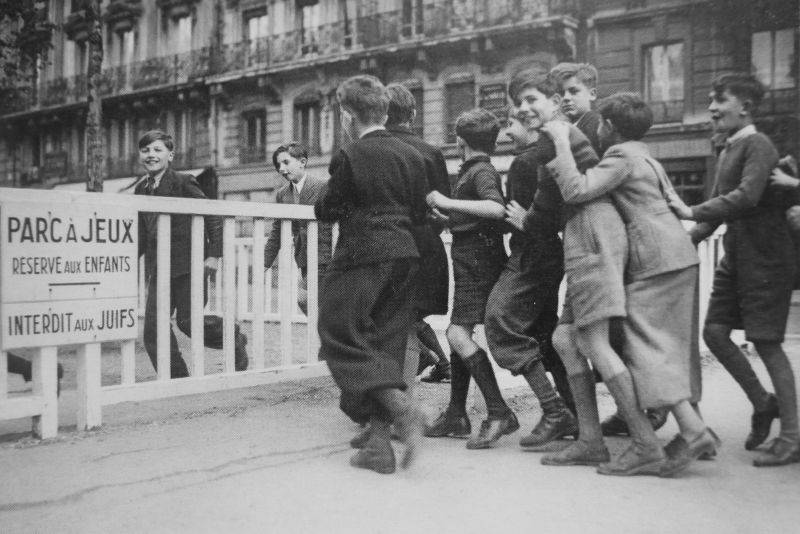
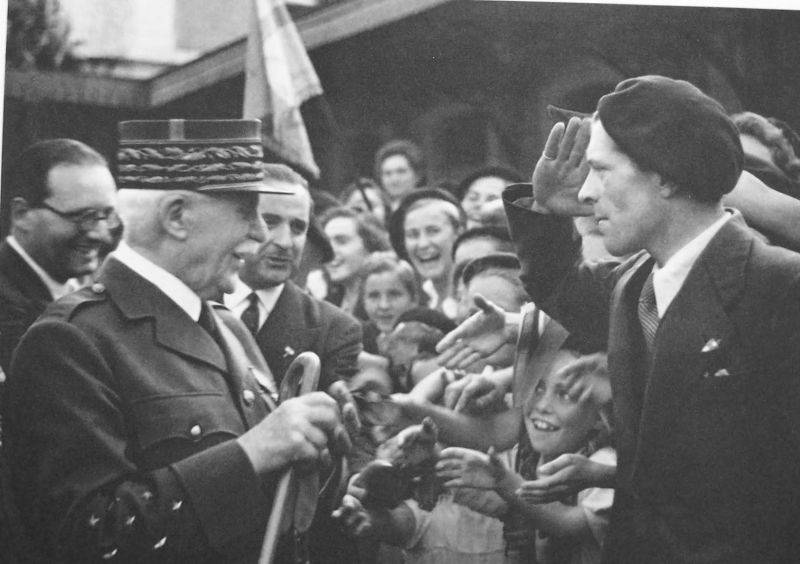
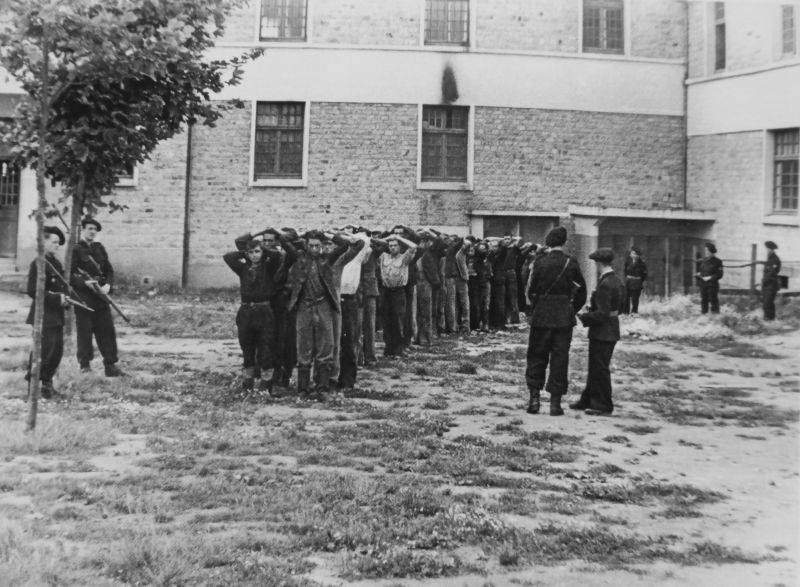
France capitulated so quickly that the five regiments of the Foreign Legion, who were on the Western Front, did not have time to clearly prove themselves.
Divided legion
The first armored cavalry foreign regiment, which became part of the Division of Division Intelligence 97, after the Compiegne Armistice was returned to Africa, where its troops were sent to the reserve. This regiment was again formed only in 1943 - already as a combat unit of "Free France".
Other parts of the legion were completely divided into two parts, one of which was subordinate to the Vichy government, the other, the smaller, of the “Free France” de Gaulle. In the already mentioned 13th brigade (see article “Russian volunteers of the French Foreign Legion”), evacuated from Dunkirk to England, a meeting of officers was held, at which only 28 officers decided to obey de Gaulle. The rest (there were 31 of them) chose the side of Marshal Petain and, together with part of their subordinates, they were sent to the territory of France controlled by him.
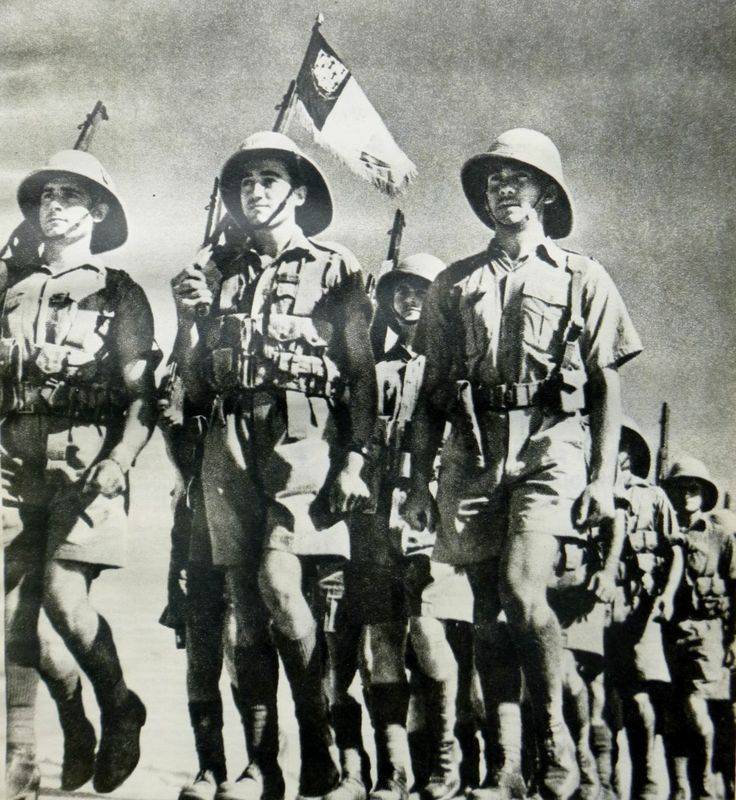
Among those who chose “Free France” was the former Georgian prince, captain Dmitry Amilahvari (who served in the Legion since 1926), who received from de Gaulle the rank of lieutenant colonel and the post of battalion commander. The Gaullist formations of this brigade initially fought against Italians in the territories of Gabon and Cameroon, and then in Ethiopia.
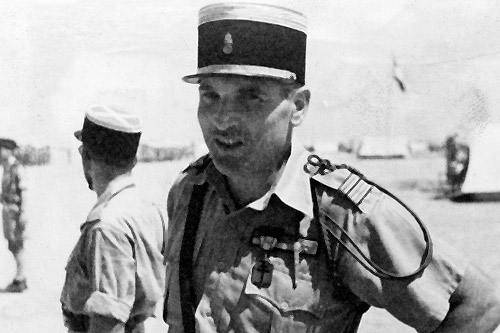
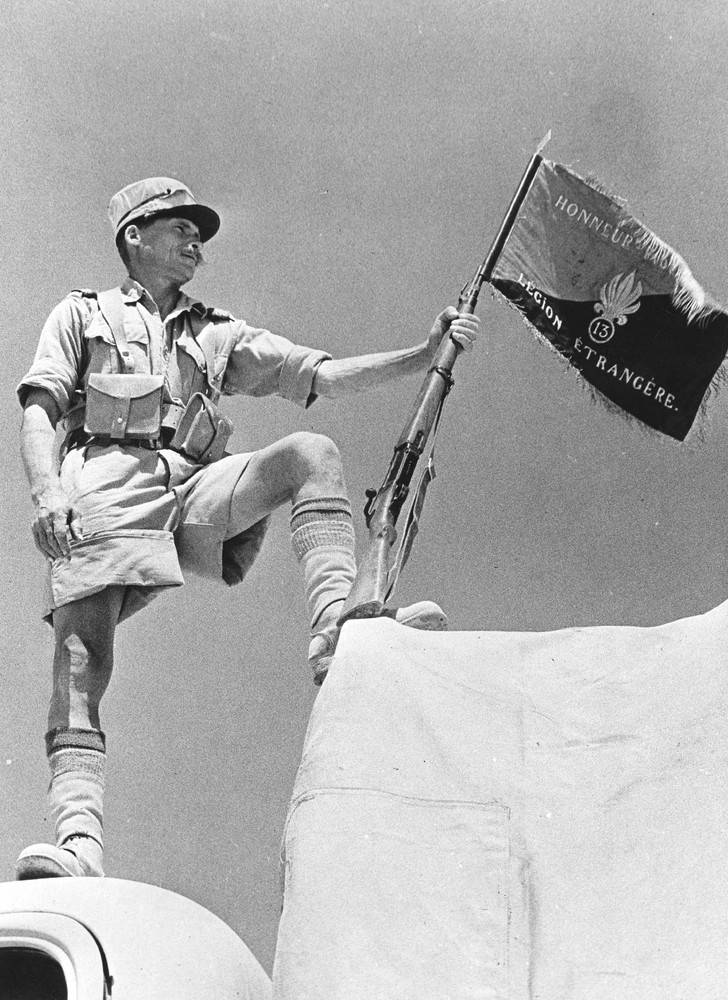
In the summer of 1941, the Amilahwari battalion in the Middle East engaged in battle with Vichy military units, among which were parts of the Foreign Legion. So, during the siege of Palmyra, the 15th company of the legion appeared in the enemy garrison, consisting mainly of Germans and ... Russians.
A romantic story is told about this episode of World War II: Amid the stubborn resistance of the enemy for the whole 12 days, Amilahvari supposedly suggested that only legionnaires could fight like that. He ordered the musicians to perform the Le Boudin march in front of the city walls. Palmira picked up the motive, after which the 15th company ceased resistance: some of the soldiers went over to de Gaulle's side, others were sent to the territory controlled by the Vichy government.
"Le Boudin"
But what is “Le Boudin” and why did the song about it become a cult among legionnaires?
The literal translation of "Le Boudin" is "blood sausage." However, in fact, this is the slang name of the tent, which, being pulled over the racks (their legionaries also carried with them), served as a shelter from the African sun. Also, legionnaires sometimes added part of the equipment to it. It was worn in backpacks (or under a belt). Therefore, the correct translation of this word in this case is “rolling”.
Excerpt from the song "Le Boudin":
For Alsatians, for Swiss, Lorraine!
For the Belgians no more, for the Belgians no more
These are loafers and bedmakers!
We are brisk guys
We are rogues
We are unusual people ...
During our campaigns in distant lands
Face to face with fever and fire
Forget with our adversity
And death, which often does not forget about us,
We, the Legion!
This song in a traditional arrangement can be heard in the film “Legionnaire” already mentioned in this article.
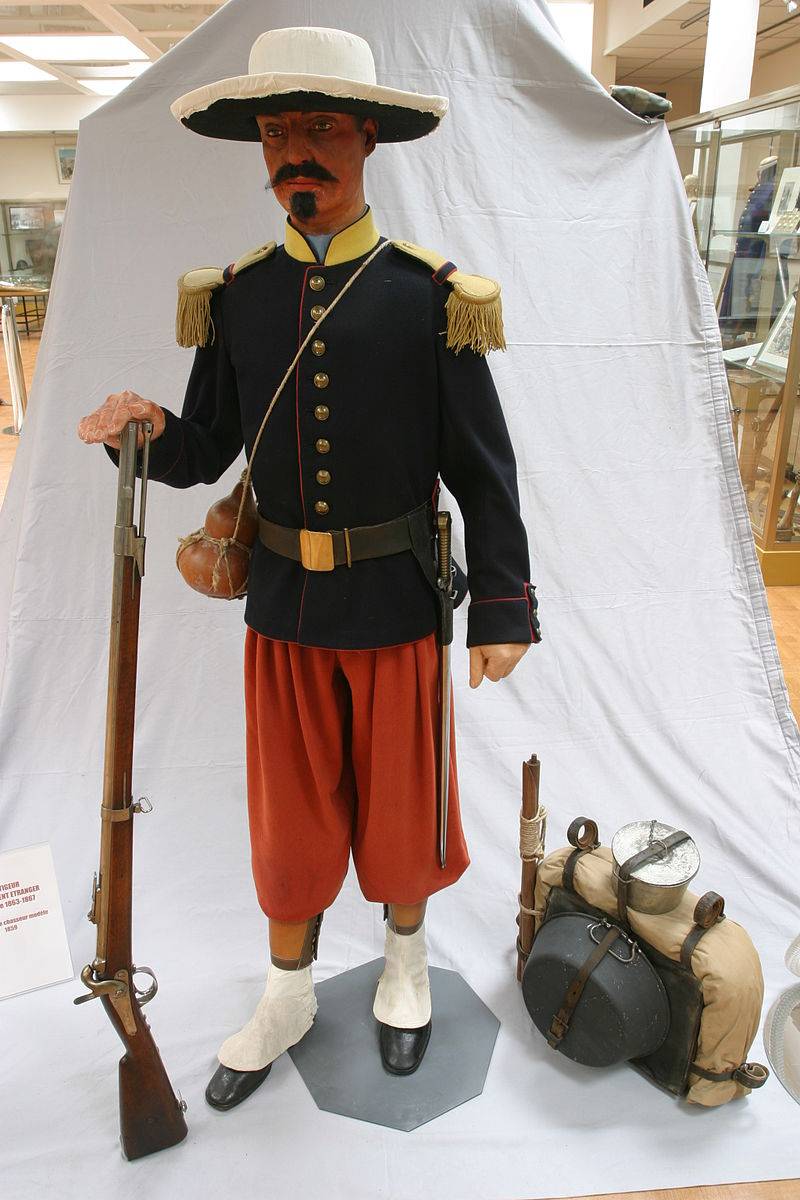
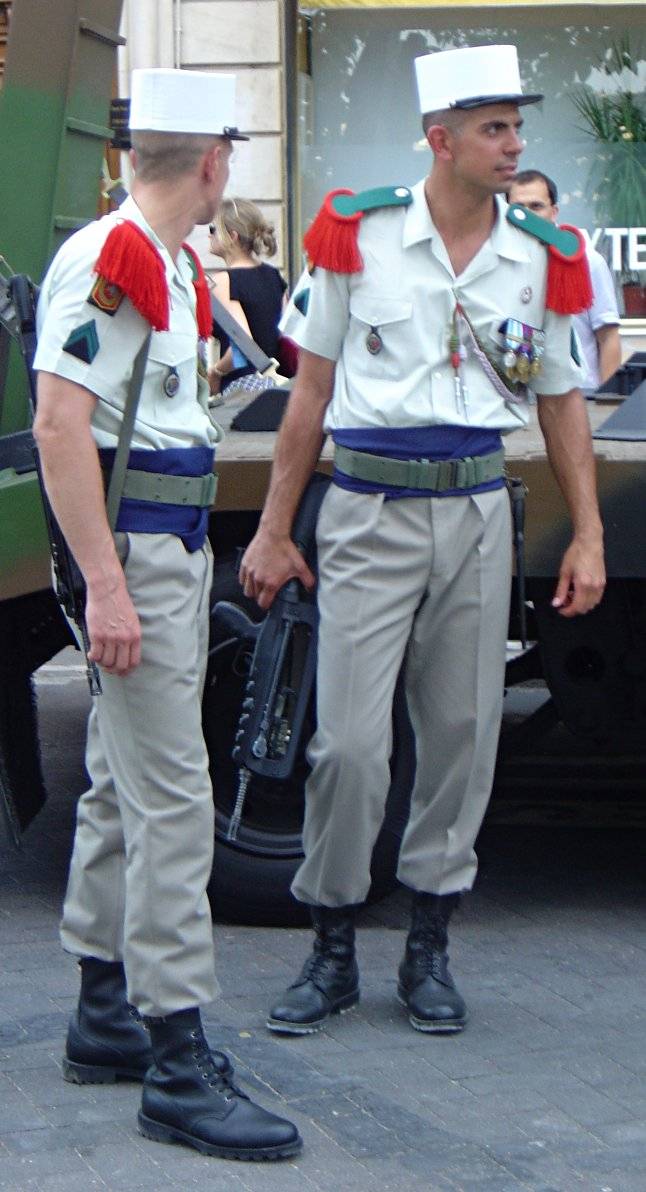
But let us return to Dmitry Amilakhvari, who was soon appointed commander of the 13th semi-brigade, thus becoming the most senior officer of the legion among immigrants from the Russian Empire (Zinovy Peshkov, for example, in the legion only commanded a battalion).
In late May and early June 1942, the 13th semi-brigade fought against the army of Rommel at Bir-Hakeim.
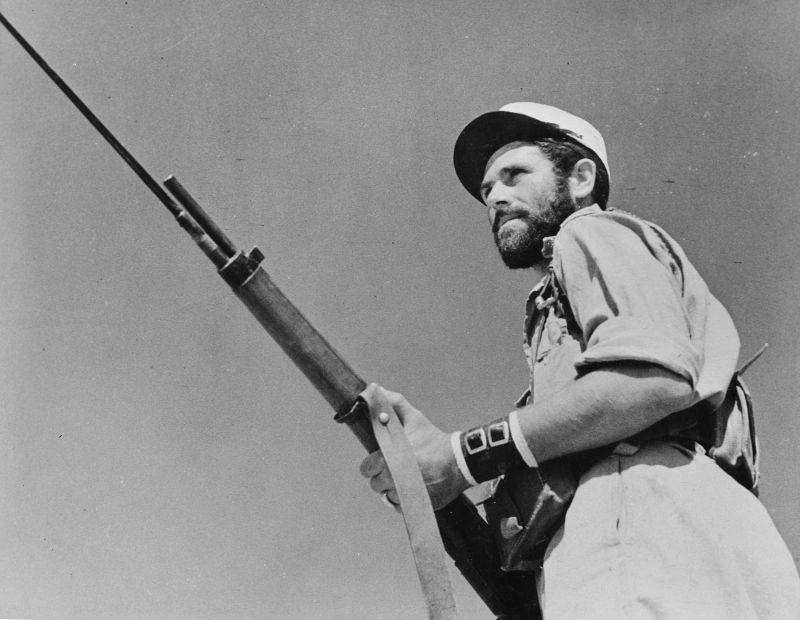
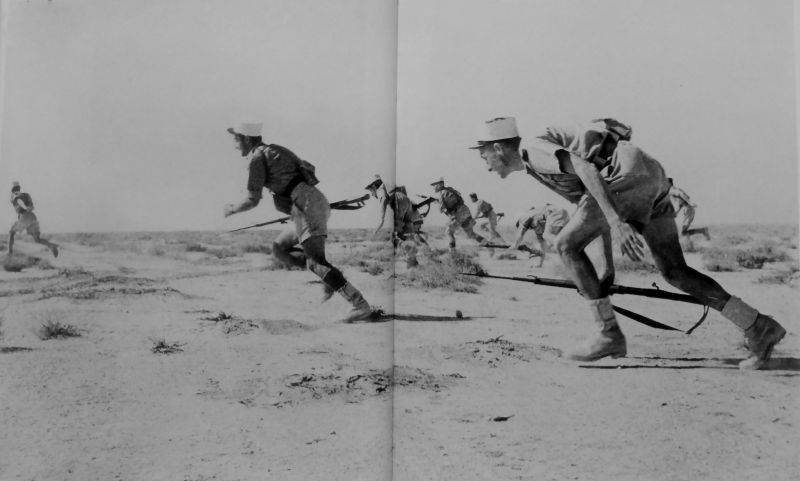
And on November 24, 1942, D. Amilahvari died during the inspection of enemy positions.
An exception
In 1941, the 13th semi-brigade that remained loyal to de Gaulle as an ambulance driver was Englishwoman Susan Travers, who was destined to become the only female legionnaire in the history of the French Foreign Legion.
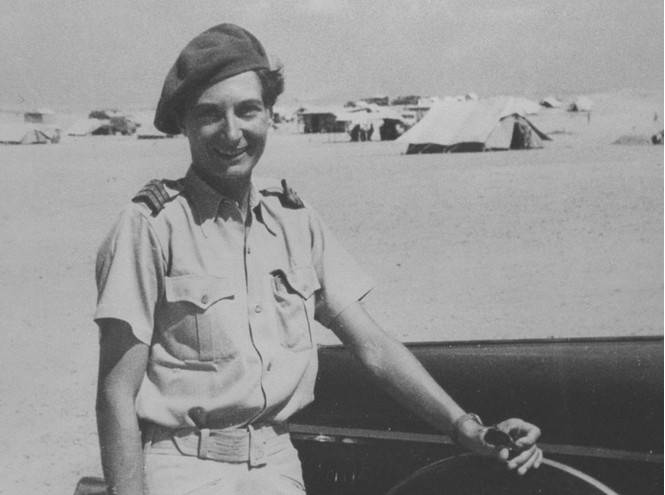
At first she was a friend of the above-mentioned Dmitry Amilahvari, then - a personal driver (and also a “girlfriend”) of Colonel Koenig, the future Minister of Defense of France, who on June 6, 1984 also received the posthumous rank of Marshal.
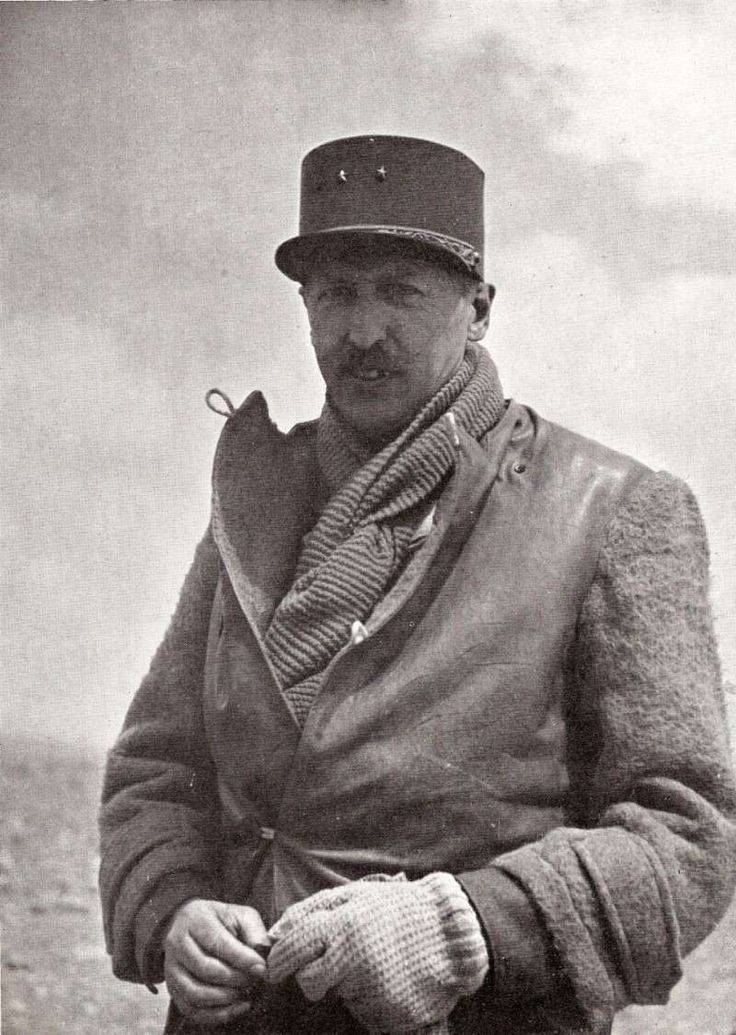
But after receiving the general rank, Koenig broke up with her and returned to his wife (de Gaulle did not approve of the “immorality”, as did the Soviet party organizers). Travers then, according to the memoirs of colleagues, fell into a depression, but did not leave the army. At the end of the war she became a self-propelled gun driver - and was injured when she was blown up with her car in a mine. She was officially accepted to the Foreign Legion only in August 1945, to the post of adjutant chief in the logistics department. She served for some time in Vietnam, but in 1947, at the age of 38, she married and quit the legion due to pregnancy. In 1995, after the death of her husband, she ended up in a Paris retirement home, where she died in December 2003.
Bonaparte's heir
After the outbreak of hostilities in 1940, under the name of Louis Blanchard, Louis Napoleon Bonaparte entered the Foreign Legion, who, until the end of his life (1997), called himself Emperor Napoleon VI. He was forced to take a different name because in France there was a law on the expulsion of members of the royal and imperial families (repealed in 1950). After the defeat of France, he participated in the Resistance movement and ended the war as part of the Alpine division.
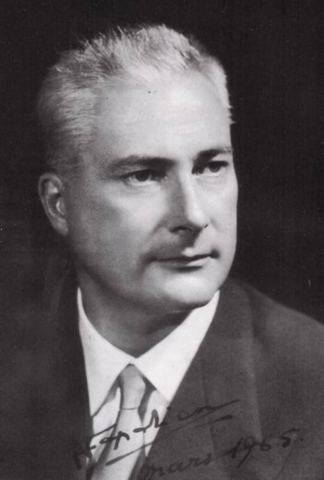
The fate of the legionnaires
The units of the 13th semi-brigade that fought on the side of Free France were an exception to the rule — all other parts of the legion remained loyal to the Petain government. Those of them who were in North Africa, according to the order of Admiral Darlan (deputy Petain and commander of the Vichy army), along with other French units surrendered to the Americans during Operation Torch (Torch) in November 1942. And in 1943, the First Armored Cavalry Foreign Regiment was re-formed in Tunisia - already as a combat unit of Free France.
Raul Salan in the 1940 campaign took part in the rank of major - he commanded one of the battalions of the Foreign Legion. After the surrender of France, he ended up at the headquarters of the colonial forces of the Vichy government and even received from Petain the rank of lieutenant colonel and the order of the Gallic Franciscus he established (this is an ax considered to be national weapons galls).
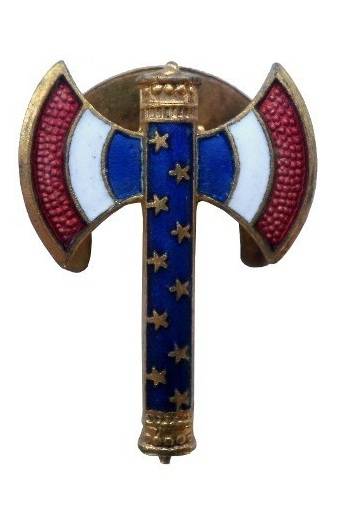
Perhaps you will be interested to know that among the persons awarded this “collaborationist” order were also the Lumiere brothers, the Prince of Monaco Louis II mentioned above, the French army commander in chief from May 19, 1940 Maxim Weygand, the future prime ministers of France Antoine Pine and Maurice Couve de Murville, future president of François Mitterrand.
Let us return to Salan, who came over to de Gaulle's side and already in September 1941 he became the head of the 2nd Bureau of the Army Headquarters in French West Africa, later, in 1943, he became the chief of staff of the French troops in North Africa.
May 30, 1944 Raul Salan was appointed commander of the 6th Senegalese regiment, December 25 - was appointed the head of the 9th colonial division.
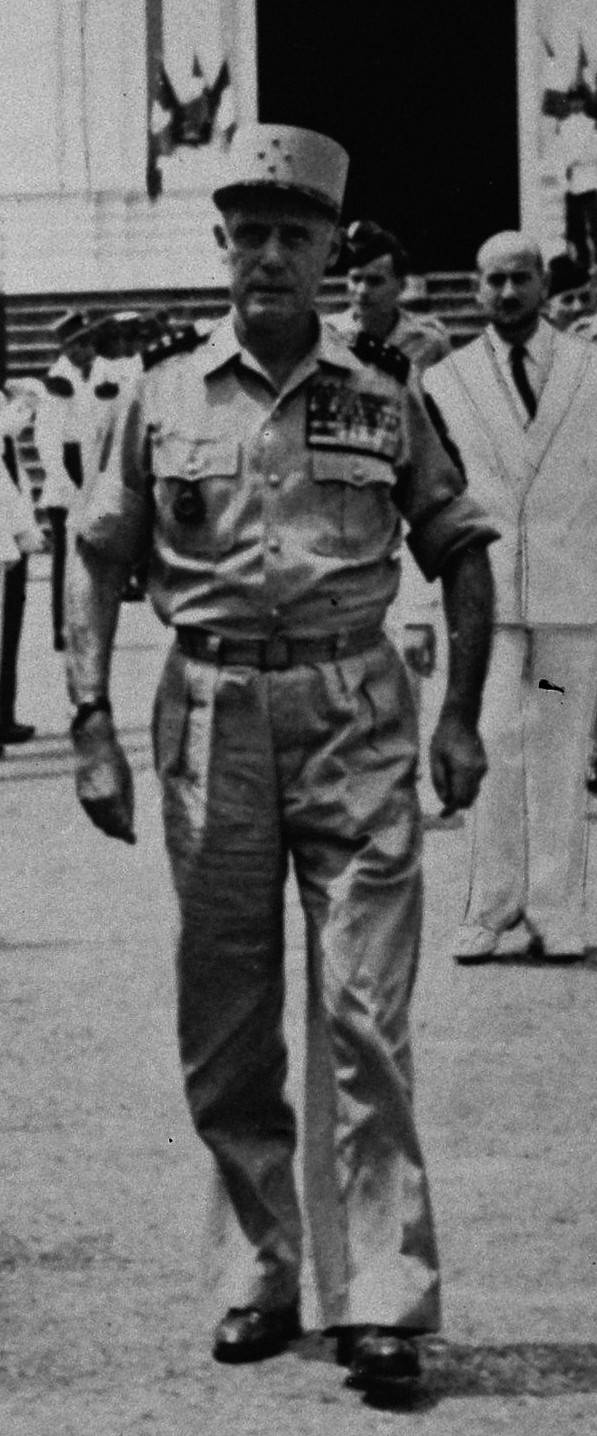
Salan also participated in the landing of the Allied forces in Provence. He ended the war with the rank of brigadier general - and already in October 1945 he went to Indochina. But this will be discussed later.
After the war ended, all the legionnaires reunited - because, as already mentioned in the first article, their “fatherland” was the legion (one of the mottos is “Legion is our Fatherland”). And trouble-free soldiers for "dirty work" are necessary for politicians of any country.
Even former Wehrmacht soldiers, especially those who were natives of Alsace, were accepted into the ranks of legionnaires. So, in the Third Parachute Battalion of the Foreign Legion, which ceased to exist in Dienbienf (more on that later in another article), 55% of the troops were Germans. An exception was made only for persons who served in the SS units. However, until 1947 these warriors were also accepted: the French themselves cautiously admit that there could be from 70 to 80 people. Historian Ekard Michels in “Germans in the Foreign Legion. 1870-1965 "wrote about this:
The same author claims that back in August 1944, some surrendered Ukrainians who served in the Waffen-SS formations were taken into the 13th semi-brigade of the Legion, and in 1945, French volunteers from the Charlemagne SS division were captured in some parts of the legion.
Former Czech legionnaires M. Faber and K. Peaks in their memoirs book The Black Battalion (it was also published in the USSR in 1960) tell the shocking story of a meeting in Vietnam in one unit of the legion of their compatriot Vaclav Maly and German officer Wolf, who took part in the murder of the family of his new colleague. In one of the battles, Maly saved the life of his commander, Lieutenant Wolf, and even became his batman. From the open-minded Wolf Small and learned about the death of his family. Together they went to the jungle, where the German killed this Czech as well in a kind of duel. It is difficult to say whether it was in reality or we have before us a model of legionnaire folklore. But, as they say, you won’t erase a word from someone else’s book.
The fighting of the Foreign Legion during the Second World War in Indochina
In Indochina during the years of World War II there was the Fifth Regiment of the Foreign Legion. This region was not yet a “hot spot” and service in this regiment was considered almost a resort. Mentioned in the article “Russian volunteers of the French Foreign Legion” the former colonel of the Russian imperial army F. Eliseev, the company commander of the Fifth Regiment, later described his colleagues in this way:
At the same time, he writes:
So the "moral instability", apparently, manifested itself only in relation to the local population.
The calm and measured life of the legionnaires of this regiment was overshadowed by only one incident that occurred on March 9, 1931 in the North Vietnamese city of Yenbai, when Major Lambett's subordinates clashed with locals shouting insulting slogans during a show dedicated to the centenary of the legion: it was shot 6 people, after which the city revolted. This poorly organized introduction was suppressed - brutally and quickly.
After the outbreak of World War II, the fifth regiment had to fight a little with the troops of Thailand, which for some time was an ally of Japan. But on September 22, 1940, an agreement was concluded between France and Japan on the deployment of Japanese troops in northern Vietnam. At the same time, one of the battalions of the fifth regiment surrendered and was disarmed, the first case of surrender of such a large division of the legion in its history. This shame will be redeemed in March 1945. Then the Japanese demanded the disarmament of all French troops (the so-called Japanese coup on March 9, 1945). French troops (about 15 thousand people) surrendered to the Japanese. But the fifth regiment of the legion refused to disarm. After Major General Alessandry, the commander of the 2nd Tonkin Brigade (numbering 5700), ordered his subordinates to surrender their weapons, the Vietnamese tyrallers left the location of their units - and many of them later joined the detachments of Vietnam. But three battalions of legionnaires moved to the Chinese border.
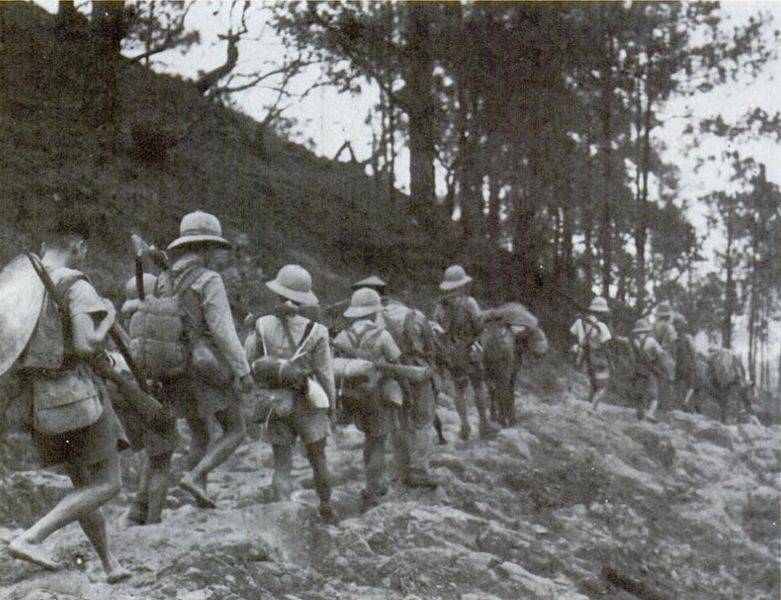
300 people died along the way, 300 were captured, but 700 people were able to break into China. F. Eliseev, quoted above, served in the second battalion of this regiment - on April 2, 1945 he was shell-shocked and captured. Another Russian officer of the legion, the commander of the 6th company of the fifth regiment, Captain V. Komarov, died during this campaign (April 1, 1945).
Eliseev was lucky: the Japanese then simply finished off many wounded legionnaires so as not to bother with their treatment. Eliseev wrote about his stay in captivity later:
But he writes differently about the Chinese:
Less fortunate were those legionnaires who found themselves in the fortified Langshon district, whose garrison numbered 4 thousand people — parts of the Foreign Legion and the Tonkin tyrants. 544 soldiers of the Legion were killed here (387 of them were shot after they surrendered) and 1832 Vietnamese (103 people were shot), the rest were captured.
The next article will tell about the participation of the Foreign Legion in the First Indochina War, the battles of the French troops with the armies of Vietnam and the disaster at Dienbienf.
- Ryzhov V.A.
- Ryzhov V. A. “Dogs of War” of the French Foreign Legion
Ryzhov V. A. Russian volunteers of the French Foreign Legion
Ryzhov V. A. The most famous Russian “graduates” of the French Foreign Legion. Zinovy Peshkov
Ryzhov V. A. The most successful Russian “legionnaire”. Rodion Malinovsky
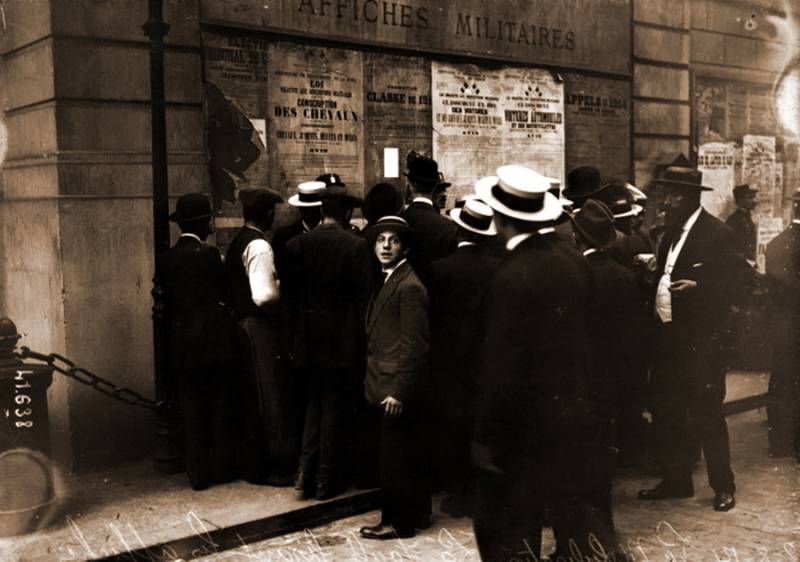
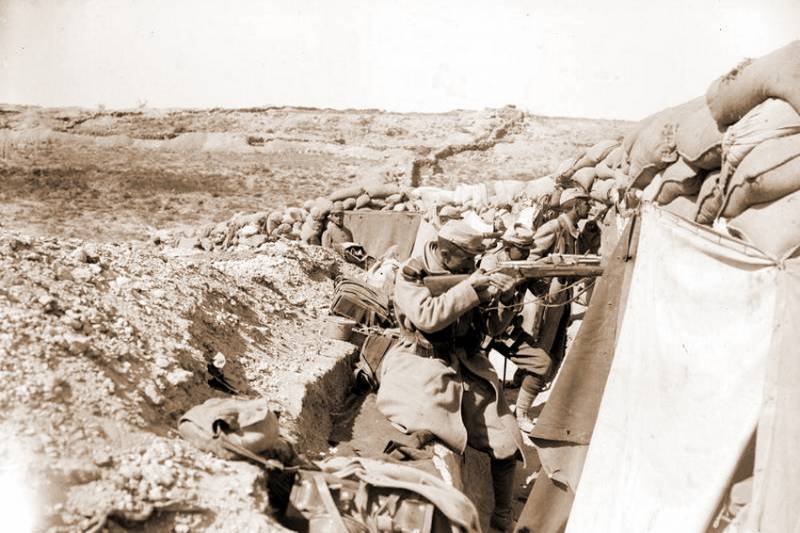
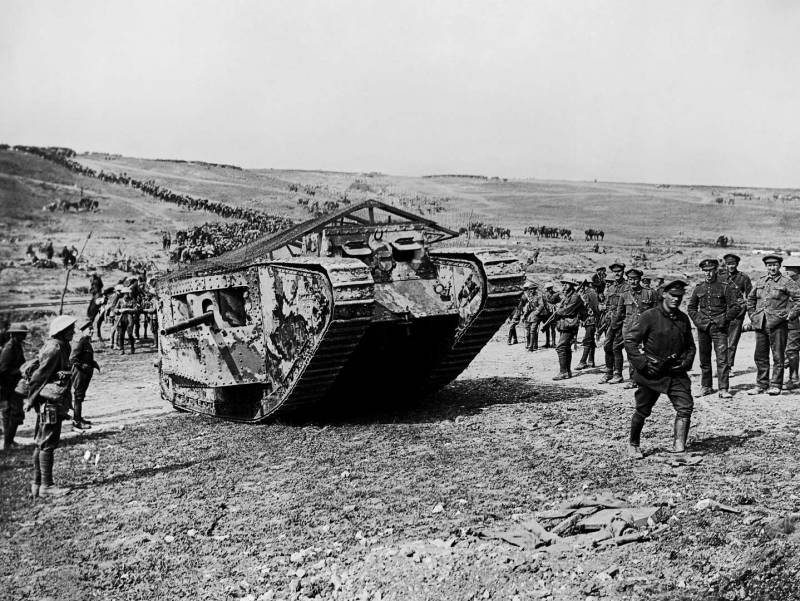
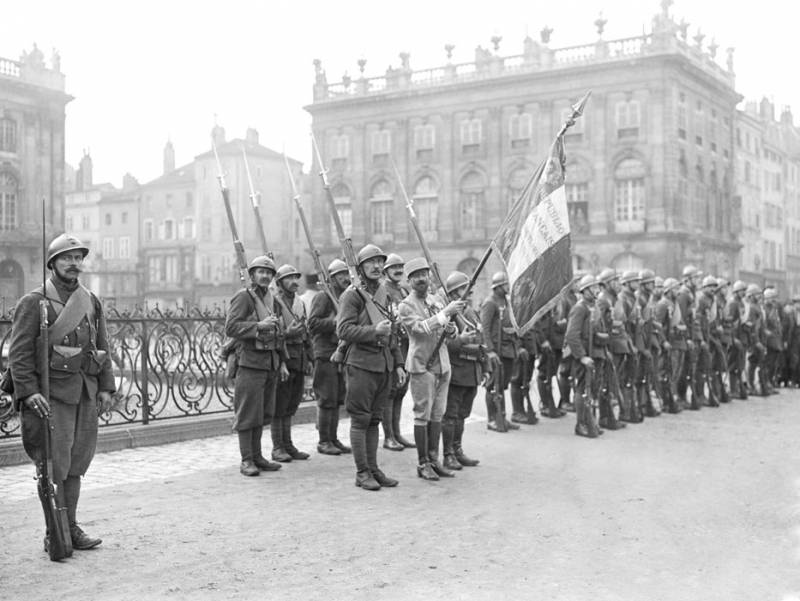
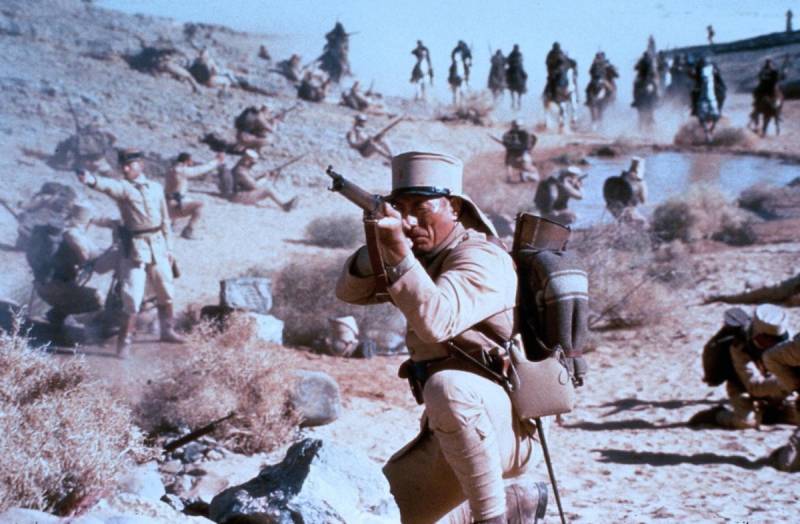
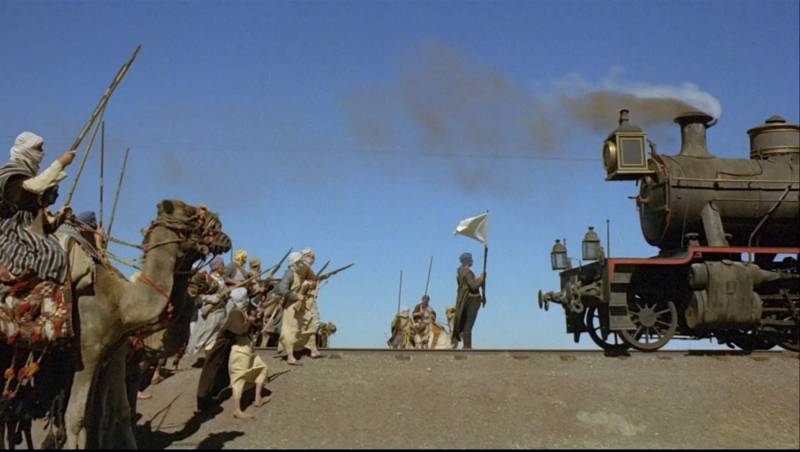
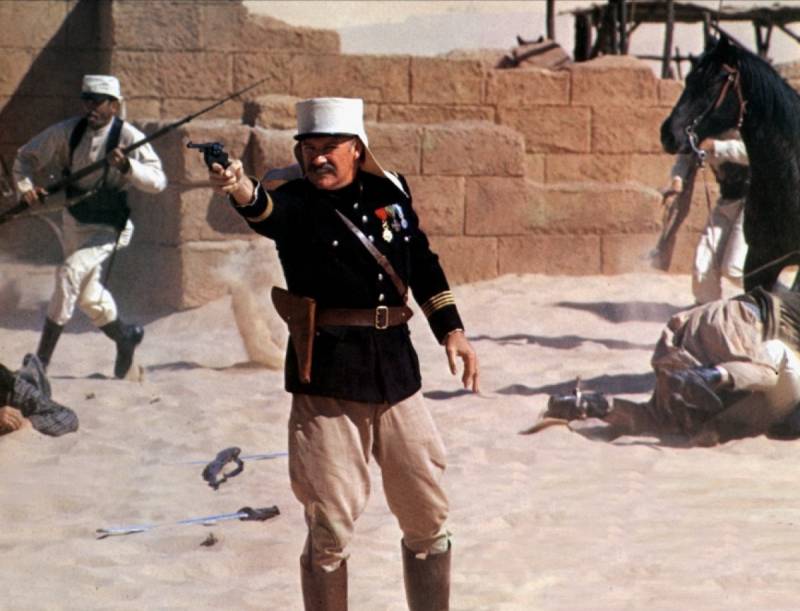
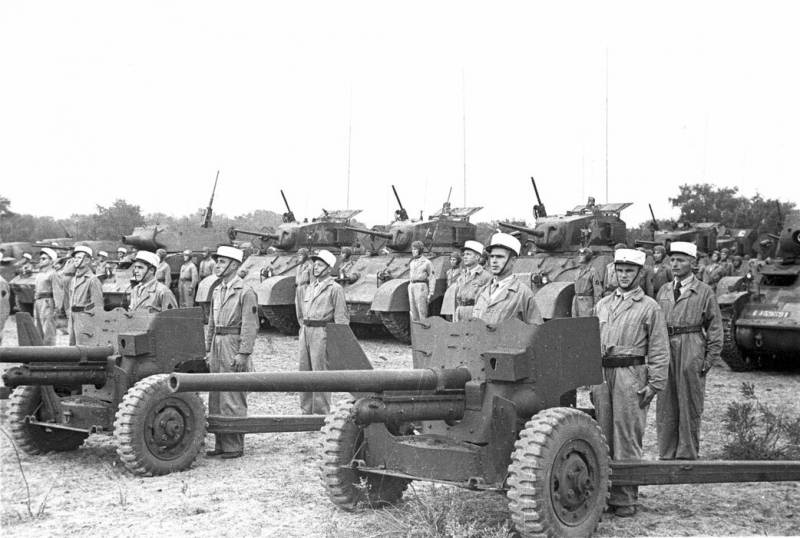
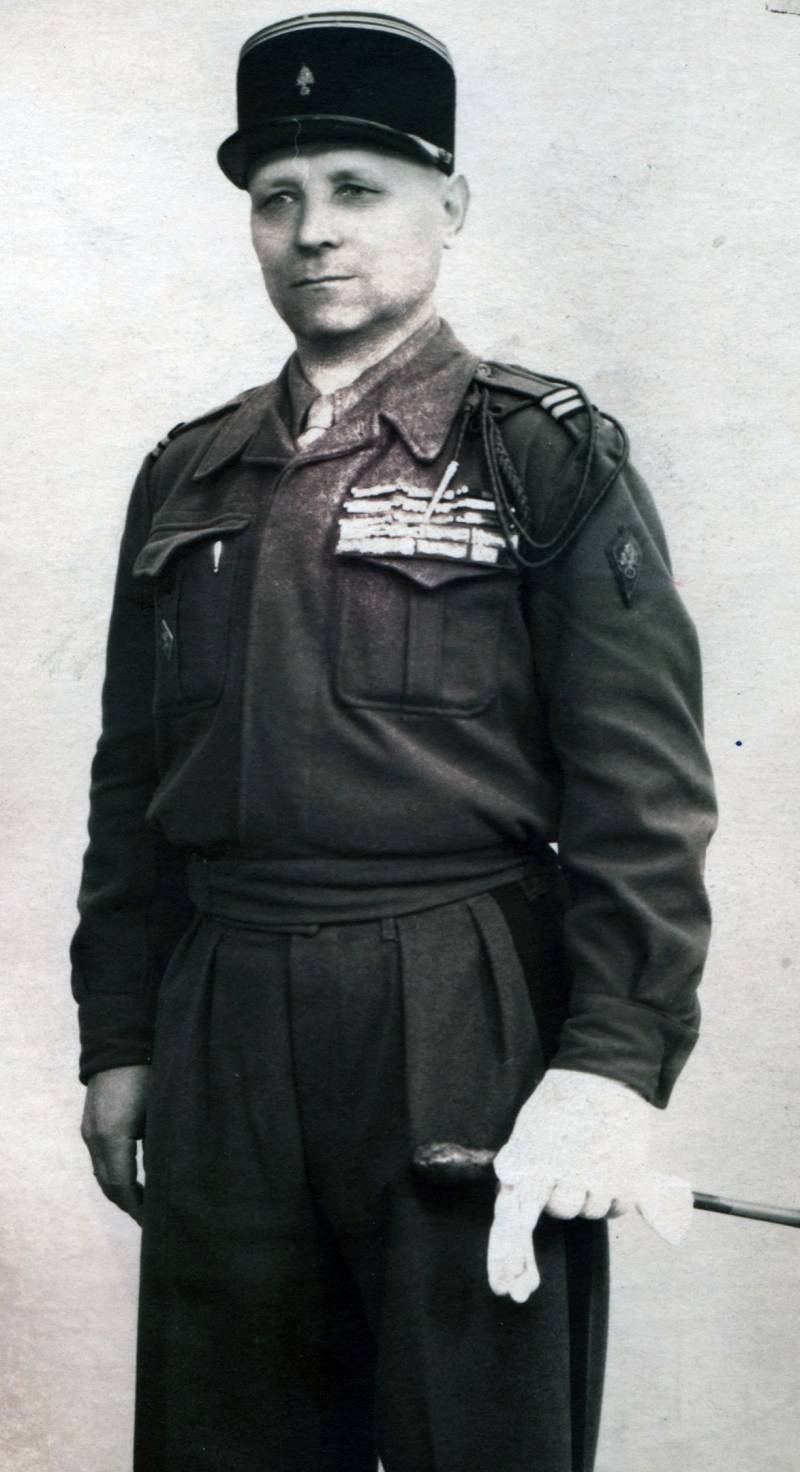
Information